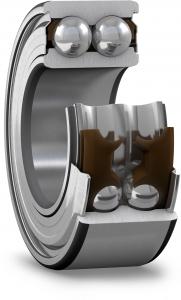
- Contact:Minister Xu
- Mobile:13841408476
- Tel:024-44837288
- Fax:024-44837004
- E-mail:xuming58@126.com
- Web:natashaterry.com
- Address:No.110 XiangHuai Road
Benxi Economic Development Zone
Liaoning Province
SKF Researchers make breakthroughs in rolling element bearing steels
08 Jan,2019Rolling element bearings have a significant impact on the energy-efficiency of most mechanisms, yet they have their limitations in terms of load capacity, speed and longevity. Jon Severn reports on recent developments that could lead to major advances in bearing steels.

Rolling element bearings are today found in a wide variety of products, from cars and aero engines to electric motors and bicycles. Often viewed as commodity components, rolling element bearings are generally taken for granted - unless they fail prematurely due to incorrect specification, installation, lubrication or sealing, or because a user is sold a counterfeit product of very substandard quality.
Bearing technology is relatively mature, having evolved since, some say, Roman times, and then been developed more rigorously in the last hundred years or so. Nevertheless, manufacturers are continually seeking to improve their designs in order to stay one step ahead of their competitors. Drivers for product developments include higher speed and/or load capacity, longer life and reduced friction, with this latter factor being of particular interest to those designers seeking to improve the energy-efficiency of their products.
The leading manufacturers of bearings are certainly adept at improving their bearing designs. For example, SKF recently introduced the E2 range of energy-efficient bearings. The first E2 products launched in 2009 were single-row, deep-groove ball bearings for applications with light and normal loads. These benefit from features such as an optimised internal geometry, a new polymer cage and a low-friction grease; the result is that frictional moment is improved by 30per cent or more compared with the company's already efficient standard bearings, plus the cooler running extends both grease life and relubrication intervals to reduce maintenance costs. Another product added to the E2 family in June 2011 is the double-row, angular-contact ball bearings (DRACBB) that deliver the same improvement in frictional moment, though in some cases the reduction can be 50per cent or more (Fig. 1).
However, SKF is not content with making this level of progress, even though an improvement in the order of 30 to 50 per cent in a particular characteristic is a substantial advance.
For product innovation, SKF focuses on seven core technologies: steel and heat treatment; non-metallic materials; sensorisation (combining sensors with bearings); tribology; modelling and simulation; lubrication; and sealing.
Of course, there is some overlap between these, so the research and development teams are encouraged to liaise with each other. In addition, sustainability and the environment are taken into account across all areas.









